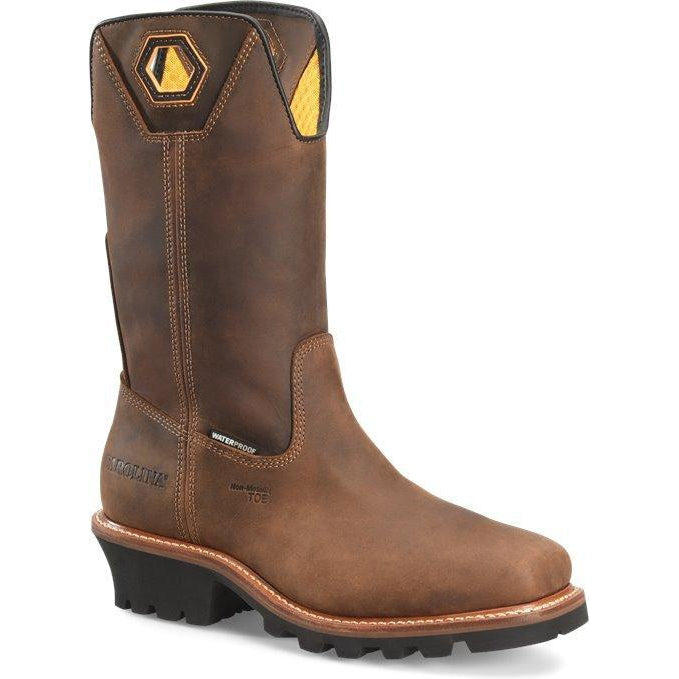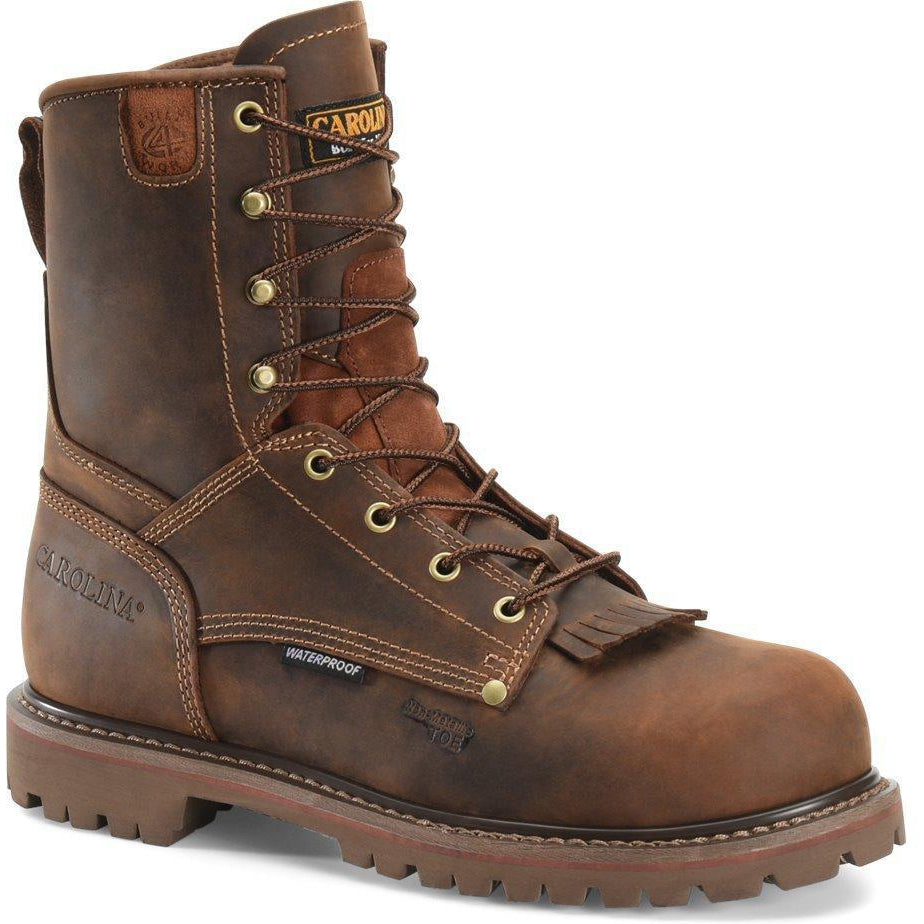If you’re wondering what’s the difference between waterproof vs. water-resistant vs. water-repellent boots, you’re not alone. Many people looking for boots that provide protection against moisture ask themselves the same question. And this is not surprising as brands often use these terms interchangeably without thinking about how confusing it can be for buyers when they need to pick the perfect boot for their needs.
However, these terms don’t mean the same thing. Water-resistant boots and waterproof boots offer different levels of protection against water and cold and serve different purposes. While waterproof boots offer more protection and durability than their water-resistant counterparts, water-resistant boots are more breathable.
So, the type of boot you should choose will largely depend on the conditions you will be wearing them in, your need for breathability, and your style preferences. In this article, we explore other differences between these three types of boots to help you make an informed decision when buying your next pair of men's work boots.
What Are Water-Resistant Boots?
Water-resistant boots are designed for outdoor use when it rains or falls snow. They often have canvas or leather uppers and robust rubber outsoles. These are treated with a special coating to repel water and discourage water penetration.
Water-resistant boots typically need to pass the “hydrostatic head” test to be labeled as such. In this test, water is forced through the boot fabric to determine how much pressure it can withstand before it leaks. That said, boots need to endure 200 mm of liquid pressure to be labeled water-resistant.
These boots can be worn for various activities such as work, hiking, and walking. However, you should be careful not to submerge them in water for more than a couple of seconds, as they won’t be able to keep your feet dry.
[prc-collections-carousel]
What Are Water-Repellent Boots?
A common misconception is that water-resistant boots differ from water-repellent ones. The truth is that these two terms describe similar, if not the same, levels of water resistance because water repellency is a feature of water resistance. Also known as hydrophobic, water-repellent footwear repels water when in contact. That’s why these two terms are often used interchangeably.
What Are Waterproof Boots?
Waterproof boots have the ability to be submerged in water without allowing it to get inside the boots. Waterproof footwear is usually made of intrinsically waterproof fabrics, such as nylon or leather, making them perfect for wet conditions.
This type of boot typically features rubber, polyurethane, or neoprene uppers and tough rubber outsoles. All of these materials are non-porous and stiff, making them less comfortable than their water-resistant counterparts. Still, their liners are often made of soft materials. Moreover, these boots are usually insulated because they are typically worn in inclement weather conditions.
Unlike water-resistant boots, waterproof ones can withstand at least 1,000 mm of water pressure, meaning you can wear them when walking through deep snow, puddles, or even streams without getting your feet wet.
The Differences Between Waterproof vs. Water-resistant vs. Water Repellent Boots
Here are some of the key differences between these three types of boots.
Effectiveness
Waterproof boots are a wiser choice for winter as they provide more protection from rain, snow, wind, and cold, keeping your feet warm and dry. Waterproof boots are typically made of leather along with rubber to keep prevent moisture from seeping in. Besides that, they often feature insulation to prevent your feet from getting cold when temperatures drop.
On the flip side, water-resistant boots are more breathable but they offer less protection from the elements. That’s why they are a good choice if you need protection for shorter periods.
Price
The price difference between waterproof vs. water-resistant vs. water-repellent boots is significant, with waterproof boots being the most expensive as they typically feature a waterproof membrane, preventing water from getting inside your boots. What’s more, they are manufactured using cutting-edge technology and high-quality materials to keep your feet dry and warm during the most challenging conditions.
Water-resistant boots are made of cheaper materials, making them a cheaper option to buy. However, that doesn’t mean they are of low quality - they just don’t serve the same purpose as waterproof ones. Water-resistant footwear prevents water from seeping in from the outside and is typically made of durable fabrics built for breathability. This also means they are quick to dry if they get wet.
Weight
The weight difference between waterproof vs. water-resistant vs. water-repellent boots is insignificant as weight depends more on other factors, such as safety toes and outsole materials. Still, waterproof boots weigh somewhat more than their water-resistant counterparts.
Breathability
When it comes to breathability, water-resistant boots are winners as they are designed to be breathable. On the other hand, waterproof boots are designed to keep your feet warm and dry, but they need to sacrifice breathability to provide higher protection from the elements.
Purpose
Waterproof boots are a great choice if you hunt or perform other activities in wet and cold weather as they offer unparalleled protection against the elements. On the other hand, water-repellent boots are a better choice for rainy days when temperatures aren’t freezing.
Insulation
While water-resistant boots can come with insulation, the degree of insulation often isn’t high because they are designed to be breathable. On the other hand, waterproof boots typically feature higher levels of insulation, keeping your feet warm even in freezing weather conditions. So, if you’re looking for insulated boots, waterproof boots are your best bet.
Durability
Waterproof boots win when it comes to durability as they are made of tougher materials to withstand the most challenging conditions. Their water-resistant counterparts are more prone to damage as materials used in their manufacture aren’t as robust as those used in waterproof boots.
Advantages of Water-Resistant and Water-Repellent Boots
- Wtaer-resistant boots keep your feet dry in moderately wet conditions.
- They prevent slips and trips.
- They are easy to clean.
- Water-resistant boots are breathable.
- They are stylish.
- They are lightweight.
- Water-resistant boots can be used for various activities.
Advantages Of Waterproof Boots
- Waterproof boots offer unparalleled protection in wet conditions, keeping your feet both dry and warm.
- They can survive if you submerge them in water.
- Waterproof boots typically come with insulation, meaning they are an excellent choice during harsh winter weather.
- They can be incredibly stylish.
- They are some of the most durable boots.
Get the Best Boots for Your Needs
[prc-collections-carousel]
After reading this article, you have a good idea about the differences between waterproof vs. water-resistant vs. water-repellent boots. While water-resistant and water-repellent boots mean the same thing, waterproof boots differ from their water-resistant counterparts in several ways.
First, they offer more protection from the elements. Besides protection against water, they also protect your feet from cold as they often feature insulation. Second, they are made to be extremely durable because they need to withstand the most challenging conditions.
On the other hand, water-resistant boots will still protect your feet from moisture. However, you can’t walk through puddles when wearing this type of boots as they aren’t designed to withstand high levels of moisture. Nevertheless, they offer optimal protection when it rains and are more breathable, making them a great choice for an all-around boot.
If you’re looking for a new pair of boots that offer protection against water, check out our collection of high-quality water-resistant and waterproof boots at discounted prices and choose the perfect pair for your needs.





